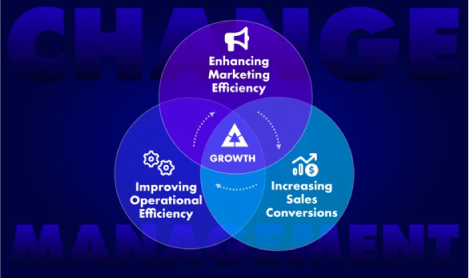You’re trying to grow your dental practice and implement change, but that process can be slower and more difficult than you ever anticipated. If you have a large dental office, it can be even harder to implement change. Holly Mitchell, founder of the LeadWell Network, shares the seven steps to effective change management – with a warning.
“When our practice was small, it was really easy to make changes,” says Mitchell, who was the practice manager and CEO at a large practice in New York City. “I got things done with the sheer force of my will. I was going to be annoying enough and persistent enough until it actually happened. But, once our office had more than 50 people, change management became incredibly important.”
Step 1: Awareness
If you’ve decided that you’re going to make a change like implementing CEREC or another technology, you need the support of your team. Support is garnered by creating awareness. “Let them know that the change is coming. Let them know in advance the date when is this going to drop, so that they can be mentally prepared,” says Mitchell.
Step 2: Team Buy-in
The next step is team buy-in. Tell the team why a change is needed and how it’s going to benefit the practice. “But, what’s really important to people is knowing how is this going to impact each one personally,” says Mitchell. What are the positives? What are the downsides?
“You need to be really transparent about the impact it’s going to have on your team, so this goes as smoothly as possible. If you don’t have that buy-in, you may have people who try to sabotage or campaign against the decision,” explains Mitchell.
If there is someone who is likely to object, Mitchell recommends taking that person aside to talk through the concerns and to get cooperation.
Step 3: Motivation
Look at what motivates the individuals who will be affected. It is likely to be different for each person. You need to know your team members well, Holly Mitchell advises.
“Are they motivated by bonuses or improving our standard of care and providing a higher level of patient experience? Do they want to be respected or noticed for a job well done? If you let the person know that by assisting with this change, they’ll get what they want, you’ll have an eager and willing copilot in executing this change,” Mitchell says.
Step 4: Skills Training
If the change requires new knowledge and skills, Holly Mitchell highly recommends devloping a plan for that to happen. Provide enough time for team members to become competent, confident and get over anxiety. Without effective training and competency development, team members can become defensive, shut down, or become disruptive.
Step 5: Allocate Resources
A lack of resources means unsuccessful implementation and frustration for everyone involved. Does the team have what they need in order to do the job right? Do they have the time? Do they have the skills? Do they have the people? Do they have the finances? Mitchell advocates getting everyone who will be affected by this change in a room so they can plan out exactly what they’re going to need in order to be effective.
Step 6: Create an Action Plan
“Creating the action plan and choosing the right people to both assemble that and to execute it is really important,” says Mitchell.
It can be an easy mistake to only include the organization’s leaders in creating the action plan, and forget to include the people who will be impacted by the changes.
“Invite them to the table, because if we don’t have them there, we’re going to miss things and we’re going to end up on a treadmill putting in a lot of effort and not really going anywhere,” explains Mitchell. “An effective action plan is designed by all affected parties with a to-do list of who’s going to do what by when and includes a series of follow-up meetings.”
Step 7: Follow-Up Meetings
Have frequent follow-up meetings so you can assess the success of your change implementation. New habits may need to be developed and that takes time, but frequent follow-up meetings keep team members on track. You may need to modify your plan as you go to improve it. “You might find that after week one, you’ve implemented it 10 percent. After week two, it’s 25 percent,” says Mitchell. “Remain persistent and continue to have that conversation so that you can iron out the kinks along the way and hold the team accountable to success.”
A Word of Warning
If you skip any of these steps, then you can accidentally slow down the progress. Each step builds on the one before, and it’s important to follow them in order.







